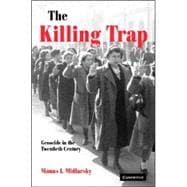
Note: Supplemental materials are not guaranteed with Rental or Used book purchases.
Purchase Benefits
What is included with this book?
| Preface | |
| Part I. Introduction: 1. Preliminary considerations | |
| 2. Case selection | |
| Part II. Explaining Perpetrators: Theoretical Foundations: 3. Continuity and validation | |
| 4. Prologue to theory | |
| 5. A theoretical framework | |
| Part III. The Theory Applied: 6. Threat of numbers, realpolitik, and ethnic cleansing | |
| 7. Realpolitik and loss | |
| 8. The need for unity and altruistic punishment | |
| 9. Perpetrating states | |
| Part IV. Victim Vulnerability: Explaining Magnitude and Manner of Dying: 10. Raison d'é | |
| tat, raison d'é | |
| glise | |
| 11. Cynical realpolitik and the unwanted | |
| 12. High victimization: the role of realpolitik | |
| 13. Inequality and absence of identification | |
| 14. On the possibility of revolt and altruistic punishment | |
| Part V. Exceptions: 15. A dog of different nature: the Cambodian Politicide | |
| 16. Dogs that didn't bark I: realpolitik and the absence of loss | |
| 17. Dogs that didn't bark II: affinity and vulnerability reduction | |
| Part VI. Conclusion: 18. Findings, consequences, and prevention. |
The New copy of this book will include any supplemental materials advertised. Please check the title of the book to determine if it should include any access cards, study guides, lab manuals, CDs, etc.
The Used, Rental and eBook copies of this book are not guaranteed to include any supplemental materials. Typically, only the book itself is included. This is true even if the title states it includes any access cards, study guides, lab manuals, CDs, etc.